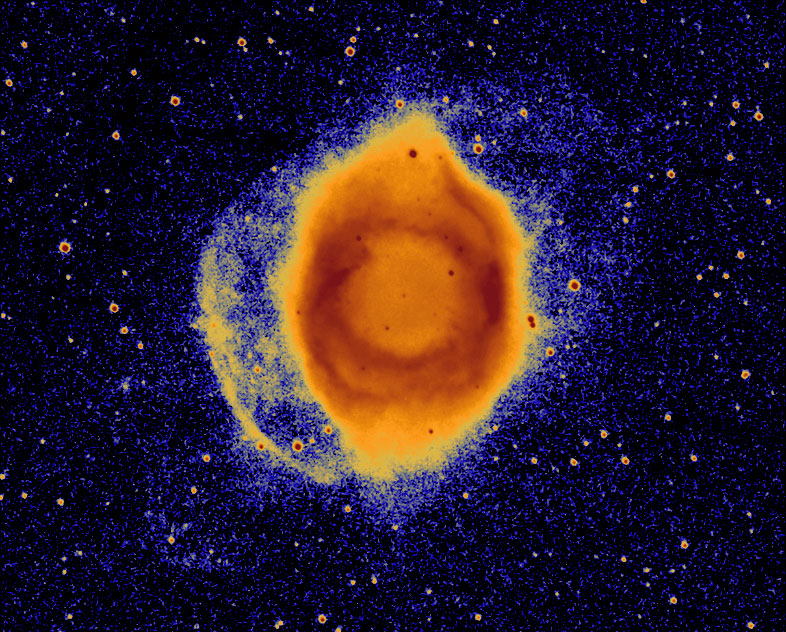
Conditions: taken Sep. 18, 2003 from a moon-lit (and light polluted) sky in Boulder, CO; no wind, no clouds, medium/poor transparency.
Setup: Borg 100ED F6.4, DF-2 focusser, CFW-8 (H-alpha filter 656/3 nm), ST10XE, MaximDL/CCD, Takahashi EM-10 mount (here's how this setup looks)
Exposure time: 12x600 sec
A logarithmic histogram stretch and a multicolored pallette has been applied to show two faint outer shells beyond the main structure. The outermost, weakest shell is not detectable in the OIII band, while the other may be just barely detectable in OIII. Can anyone enlighten me as to whether this is due to differentiation of the nebula in composition or in excitation? My intuition says 'composition': since I'd guess that the progenitor star expelled the outer layers first and that these consisted mainly of hydrogen due to mass differentiation. That's just my own guess, but please comment!
Here's my main page where you can see more of the pictures I have taken so far.
Comments greatly appreciated! (svlgrd@com.dtu.dk)